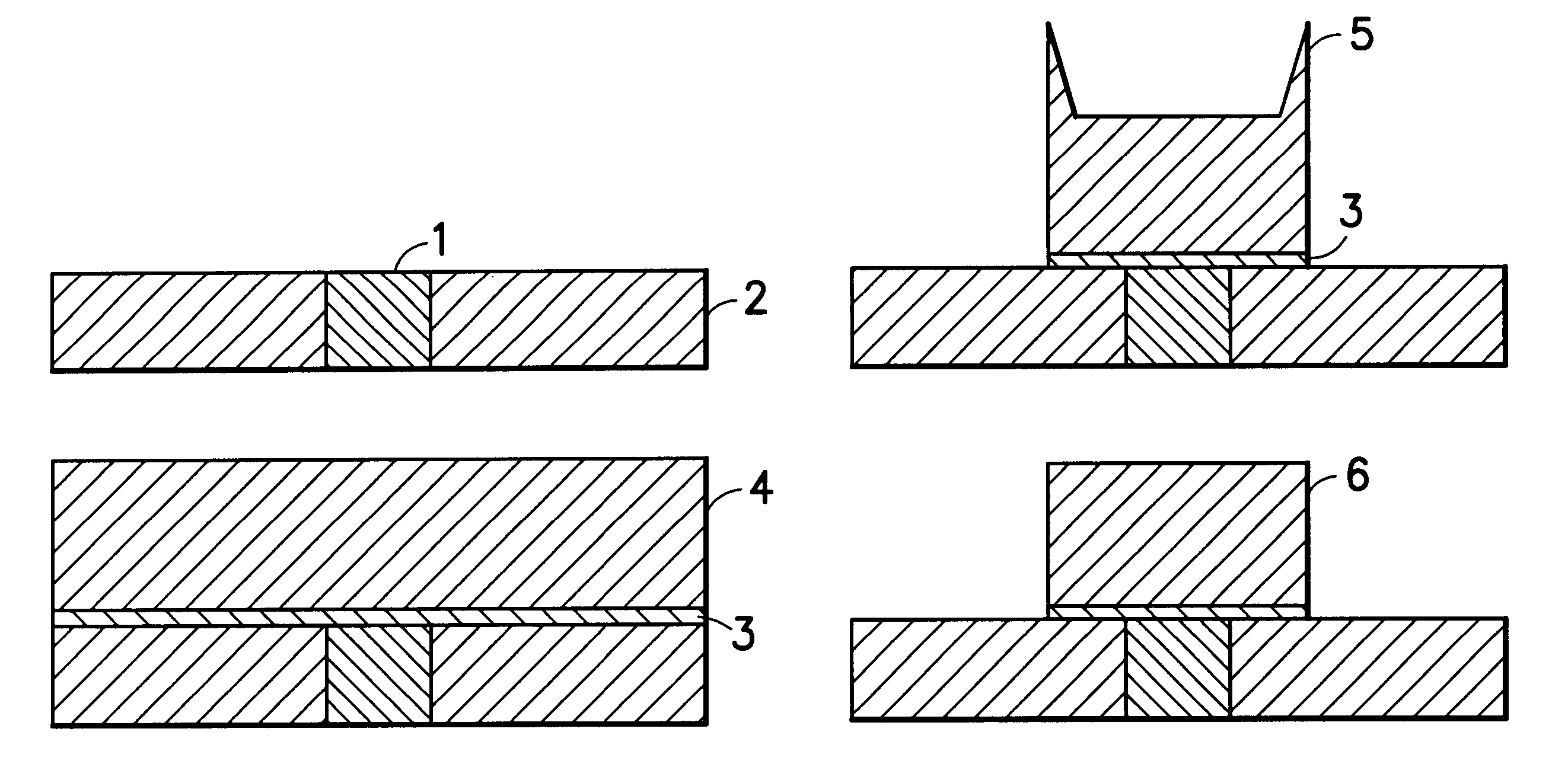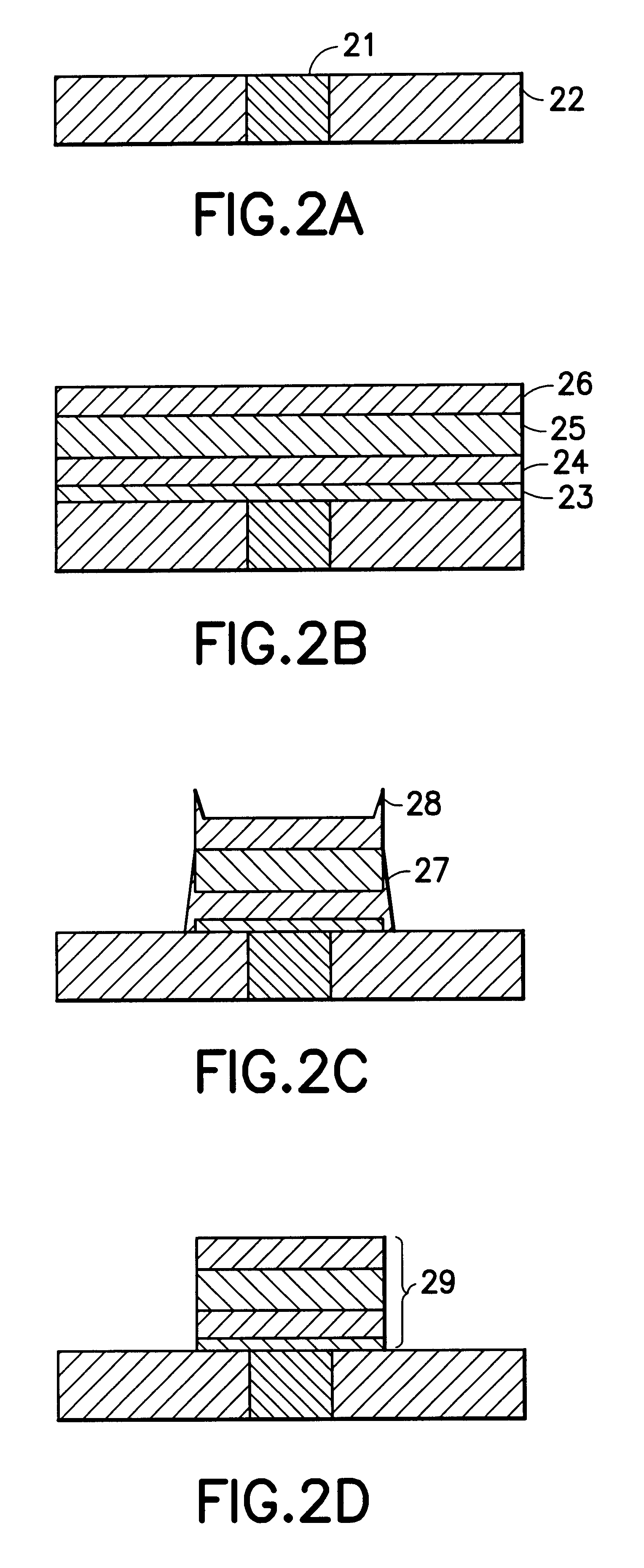Isotropic dry cleaning process for noble metal integrated circuit structures
a noble metal and integrated circuit technology, applied in the direction of polycrystalline material growth, crystal growth process, chemically reactive gas, etc., can solve the problems of significant residue left on the microelectronic device structure after the etching process is completed, absence of viable dry etching techniques for submicron, and preventing widespread use of these materials
- Summary
- Abstract
- Description
- Claims
- Application Information
AI Technical Summary
Problems solved by technology
Method used
Image
Examples
Embodiment Construction
The disclosure of U.S. patent application Ser. No. 08 / 966,796 filed Nov. 10, 1997 in the names of Thomas H. Baum and Frank DiMeo, Jr. for "METHOD FOR ETCH FABRICATION OF IRIDIUM-BASED ELECTRODE STRUCTURES," is incorporated herein by reference in its entirety.
In accordance with the method of the present invention, noble metal residue is removed from a microelectronic device structure including same, by contacting the microelectronic device structure with a gas-phase reactive halide composition, e.g., XeF.sub.2, SF.sub.6, SiF.sub.4, Si.sub.2 F.sub.6, or SiF.sub.3 and / or SiF.sub.2 radicals for sufficient time and under sufficient conditions to at least partially remove the noble metal residue.
The method of the invention may be advantageously used to remove residue from a microelectronic device structure, subsequent to reactive ion etching of noble metal electrode films thereon, for patterning of the electrode in the fabrication of the microelectronic device, and / or following chemical m...
PUM
| Property | Measurement | Unit |
|---|---|---|
| Time | aaaaa | aaaaa |
| Time | aaaaa | aaaaa |
| Pressure | aaaaa | aaaaa |
Abstract
Description
Claims
Application Information
 Login to View More
Login to View More - R&D
- Intellectual Property
- Life Sciences
- Materials
- Tech Scout
- Unparalleled Data Quality
- Higher Quality Content
- 60% Fewer Hallucinations
Browse by: Latest US Patents, China's latest patents, Technical Efficacy Thesaurus, Application Domain, Technology Topic, Popular Technical Reports.
© 2025 PatSnap. All rights reserved.Legal|Privacy policy|Modern Slavery Act Transparency Statement|Sitemap|About US| Contact US: help@patsnap.com



